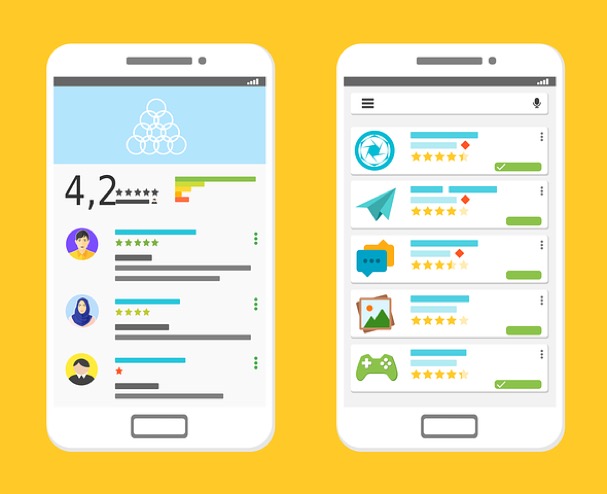
The Future of Low-Code and No-Code Development
Written by Pete Nystrom
Do you have a great idea for an app, but don’t know how to build it? Have you heard of Low-Code or No-Code solutions? They promise you the ability to create software without the need to hire a software development company. Building an app is a very complicated endeavor, can these low/no-code platforms really allow you to bring your idea to life?
As an alternative to traditional computer programming, these platforms create applications through graphical user interfaces and configurations. They provide simple, pre-packaged software elements that can be simply connected to create applications. The tools are highly visual and hide much of the more complex details of software development. For many use cases someone has already written the code, so you don’t have to.
In the simplest form, both low-code and no-code development platforms allow you to create a software application without writing code. The fundamental difference between the two are the amount of flexibility they provide. To know which is right for your company, it’s essential to understand exactly what these platforms can do and how they align with your business objectives.

What is Low-Code Development?
Low-code development is typically more configurable than no-code, allowing you some flexibility in how your app responds to different scenarios. It focuses on the design of databases, business processes, and user interfaces. Low-code development platforms are innovative with their services as they allow you to integrate additional data sources and third-party technologies like AI, the cloud, and facial recognition technology.
Low-code development allows for the creation of more sophisticated apps since they offer more customization. They also incorporate high productivity methods while allowing you to maintain application testing, quality, and performance tooling. It takes pressure off your IT department and reduces the time needed to deliver solutions.
While low-code development platforms are configurable, the amount of customization is still limited. You probably won’t get the exact functionality or user interface you hoped for. To avoid this, make sure that the platform you choose suits all your customization requirements. Also, make sure to pay attention to the platforms’ policies.
Low-Code Development Tools
The first things you should look for when deciding on a low-code development platform are strong visual development tools, easy deployment, and proper security for your systems. You should know that not all of these tools are created equally so it’s important to pay attention to the features each one has to offer.
Here are some low-code development tools to consider:
- Mendix: heavy duty project tracking, prebuilt templates and integrations, live chat support, built in collaboration and project management, and expensive.
- OutSystems: one-click deployment, offline data storage, allows for publishing directly to the App Store and Google Play, expensive, and no fully-cloud based creation environment.
- Appian: unifies data from across your organization, bridges collaboration gap to get enterprise apps done quickly, fast case management, and expensive.
- Microsoft Power Apps: point-and-click approach to app design, large selection of templates, powerful mobile functionality, and steep learning curve.

What is No-Code Development?
No-code app development is great for your business if you’re looking to apply existing solutions to your data. Whether you’re a software developer or not, this modular approach allows your business to easily automate common tasks. This significantly reduces bug testing since there’s no custom coding, rather there’s pre-built templates with tested, drag and drop components.
Although no-code app development is great for automating simple tasks, you don’t have the ability to customize your solution. Big projects and complex interactions are beyond the scope of no-code platforms. Before choosing no-code development, make sure the tools possess the capabilities you’re looking for.
No-Code App Builders
No-code app builders can take a weight off your chest as they provide your business with better agility and more productivity. App development that may have taken months or years for your company can now take days or weeks. The power of no-code can bridge the barrier of citizen developers to software development.
Here are some no-code app building tools:
- AppMachine: automate tedious processes, import photos and images, 15 navigation templates, built in layout manager, and bring web services to your app.
- Pega: uses open APIs, third party apps, continuous deployment, built in Business Process Management and Case Management, and runs across a variety of devices.
- BuildFire: intuitive app control panel, user centric system, hosts files, images, records, and data, third party APIs, and custom data sources.
- AppSheet: connect your data in the cloud, works with spreadsheet applications, and deployment with a few simple steps.

The Future of Software Development
Like any business strategy, you have to first consider what your users want and need. Then after deciding the most effective approach for your products or services, it’s essential to reach users through a website and mobile application in the digital world we live in today. Developing these applications has never been easier with low-code and no-code tools.
Low-code and no-code development platforms are changing the industry with their fast solutions. These platforms and app builders can increase productivity by saving time for your IT team while driving value for your business. However, if you’re challenge or problem is much greater than automating a few tasks, a custom software solution may be a better choice for your business. Create a solution that aligns exactly with your users’ needs and looks, feels, and works like your business would want it to.
If you’re looking to create a digital application, but don’t know where to start, we can help your company decide what’s most suitable for your business needs. Contact us today!








